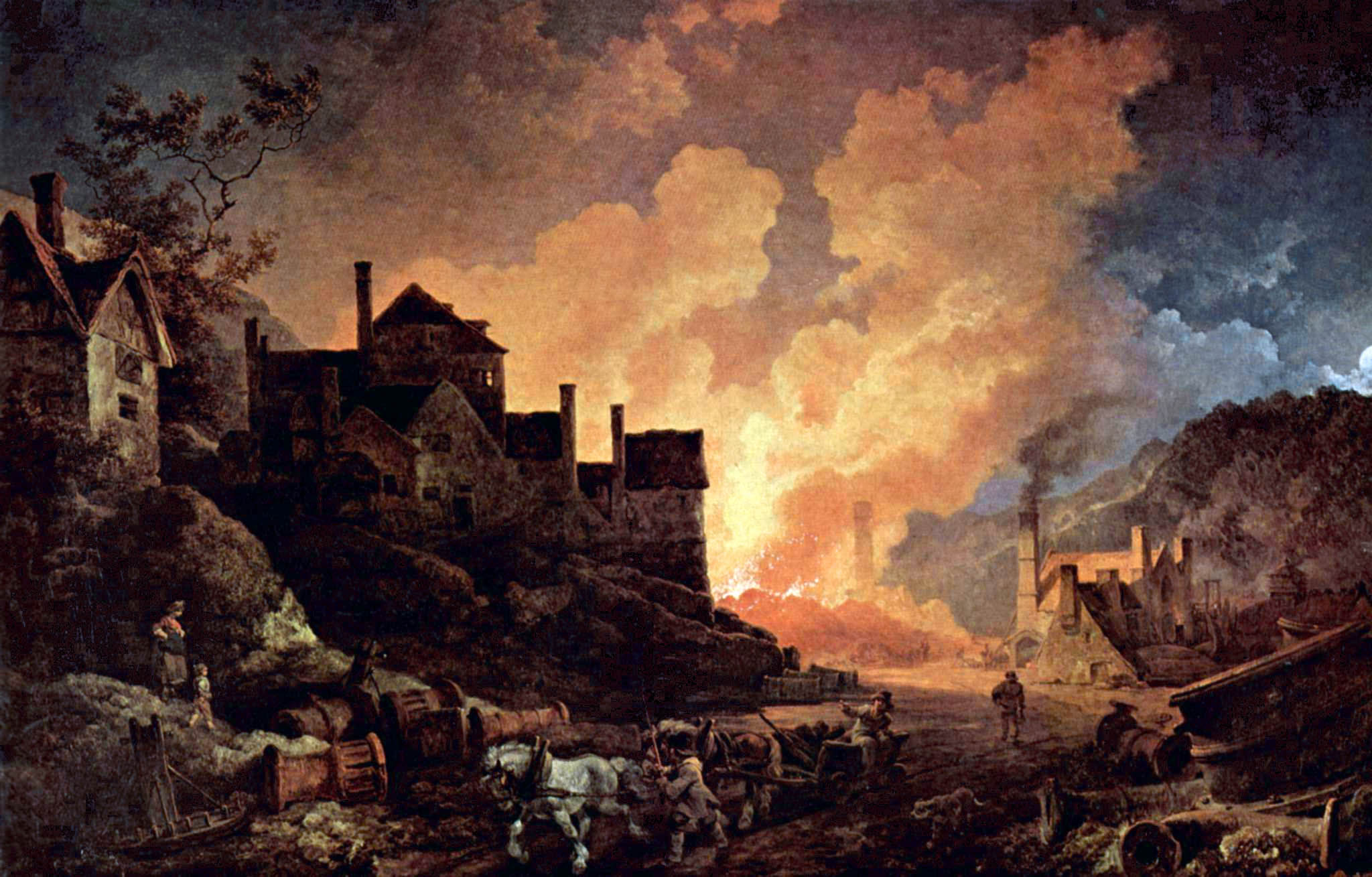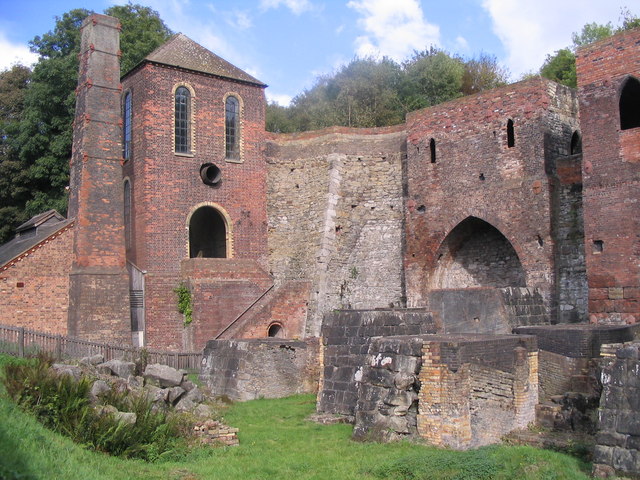Madeley Wood Company on:
[Wikipedia]
[Google]
[Amazon]
 The Madeley Wood Company was formed in 1756 when the Madeley Wood Furnaces, also called Bedlam Furnaces, were built beside the
The Madeley Wood Company was formed in 1756 when the Madeley Wood Furnaces, also called Bedlam Furnaces, were built beside the
 The Madeley Wood Furnaces or Bedlam Furnaces were owned by this company, which held mineral leases in Madeley Parish, enabling it to extract coal and iron ore. The works were taken over by
The Madeley Wood Furnaces or Bedlam Furnaces were owned by this company, which held mineral leases in Madeley Parish, enabling it to extract coal and iron ore. The works were taken over by
 Upon its opening in 1790, the ironworks had access to the
Upon its opening in 1790, the ironworks had access to the
 The Madeley Wood Company was formed in 1756 when the Madeley Wood Furnaces, also called Bedlam Furnaces, were built beside the
The Madeley Wood Company was formed in 1756 when the Madeley Wood Furnaces, also called Bedlam Furnaces, were built beside the River Severn
, name_etymology =
, image = SevernFromCastleCB.JPG
, image_size = 288
, image_caption = The river seen from Shrewsbury Castle
, map = RiverSevernMap.jpg
, map_size = 288
, map_c ...
, one mile west of Blists Hill
Blists Hill Victorian Town is an open-air museum built on a former industrial complex located in the Madeley area of Telford, Shropshire, England. The museum attempts to recreate the sights, sounds and smells of a Victorian Shropshire town ...
.
Bedlam Furnaces
 The Madeley Wood Furnaces or Bedlam Furnaces were owned by this company, which held mineral leases in Madeley Parish, enabling it to extract coal and iron ore. The works were taken over by
The Madeley Wood Furnaces or Bedlam Furnaces were owned by this company, which held mineral leases in Madeley Parish, enabling it to extract coal and iron ore. The works were taken over by Abraham Darby III
Abraham Darby III (24 April 1750 – 1789) was an English ironmaster and Quaker. He was the third man of that name in several generations of an English Quaker family that played a pivotal role in the Industrial Revolution.
Life
Abraham Darby wa ...
of the Coalbrookdale
Coalbrookdale is a village in the Ironbridge Gorge in Shropshire, England, containing a settlement of great significance in the history of iron ore smelting. It lies within the civil parish called the Gorge.
This is where iron ore was first s ...
Company in 1776. When the company was reorganised in 1797, the Madeley Wood Works became separate from Coalbrookdale, continuing (in conjunction with the Ketley Ironworks
Ketley Ironworks was an ironworks in Ketley, in Shropshire, England. Established in 1756, it was one of the largest ironworks in Britain during its ownership by William Reynolds and his brother Joseph.
The site's location is
) in the hands of the Reynolds family who had been in partnership with the Darby family at Coalbrookdale since the 1760s. After Joseph Reynolds decided to concentrate on his bank, the Madeley Wood Company works passed to the Anstice family, one of whom had managed it, and their business became another Madeley Wood Company.
The name ''Bedlam Furnaces'' may have originated with a painting by John Sell Cotman
John Sell Cotman (16 May 1782 – 24 July 1842) was an English marine and landscape painter, etcher, illustrator, author and a leading member of the Norwich School of painters.
Born in Norwich, the son of a silk merchant and lace dealer, Cot ...
(1782–1842) who painted the furnace in 1803 and titled it ''Bedlam Furnace Near Irongate,'' ic''Shropshire''. He was on tour with a fellow less well known artist called Paul Sandby Munn (1773–1845) who also painted the same subject and titled it ''Bedlam Furnace, Madeley Dale, Shropshire''. It was both a metaphor (the place appeared to the painters to resemble a lunatic asylum), and simultaneously a jest at the expense of Fletcher of Madeley (1729–1785) a then famous Methodist preacher in whose parish the ironworks were located. The furnaces were also painted, under the same name, by the painter Edward Dayes
Edward Dayes (1763 in London – May 1804 in London) was an English watercolour painter and engraver in mezzotint.
Life
He studied under William Pether, and began to exhibit at the Royal Academy in 1786, when he showed a portrait and views o ...
(d. 1804) at around the same time. This work is now part of the Tate Gallery
Tate is an institution that houses, in a network of four art galleries, the United Kingdom's national collection of British art, and international modern and contemporary art. It is not a government institution, but its main sponsor is the U ...
.
The site history through the 20th century is less well documented. Dense vegetation cover was allowed to establish itself amongst the ruins until the late 1950s when the site was subject to spoil dumping, which completely buried the furnace bases. In the 1970s what was to become the Ironbridge Gorge Museum Trust
The Ironbridge Gorge Museum Trust is an industrial heritage organisation which runs ten museums and manages multiple historic sites within the Ironbridge Gorge World Heritage Site in Shropshire, England, widely considered as the birthplace of t ...
began clearing and restoring the works.
Blists Hill
 Upon its opening in 1790, the ironworks had access to the
Upon its opening in 1790, the ironworks had access to the Shropshire Canal
The Shropshire Canal was a tub boat canal built to supply coal, ore and limestone to the industrial region of east Shropshire, England, that adjoined the River Severn at Coalbrookdale. It ran from a junction with the Donnington Wood Canal ascend ...
, the Blists Hill section of which ran immediately to the east of the Blists Hill works site. Proximity of raw materials and the means of transporting the finished product persuaded the company to build a blast furnace
A blast furnace is a type of metallurgical furnace used for smelting to produce industrial metals, generally pig iron, but also others such as lead or copper. ''Blast'' refers to the combustion air being "forced" or supplied above atmospheric ...
at Blists Hill in 1832.
Additional furnaces were added in 1840 and 1844, making a total of three, and the site remained active in the production of pig iron until 1912 when the ironworks ceased production, following the blowing in of two of the furnaces.
The furnace settings and blowing houses are now preserved, but unrestored, as part of the Blists Hill Victorian Town
Blists Hill Victorian Town is an open-air museum built on a former industrial complex located in the Madeley area of Telford, Shropshire, England. The museum attempts to recreate the sights, sounds and smells of a Victorian Shropshire town ...
, one of the Ironbridge Gorge Museums.
References
Further reading
*{{Cite book , first=B. , last=Trinder , authorlink=Barrie Trinder , title=The Industrial Revolution in Shropshire , edition=3rd , publisher=Phillimore, Chichester , year=2000 Telford Ironbridge Gorge Defunct companies of the United Kingdom Industrial history of the United Kingdom Ironworks and steelworks in England Companies based in Shropshire British companies established in 1756 Organizations established in 1756 1756 establishments in England